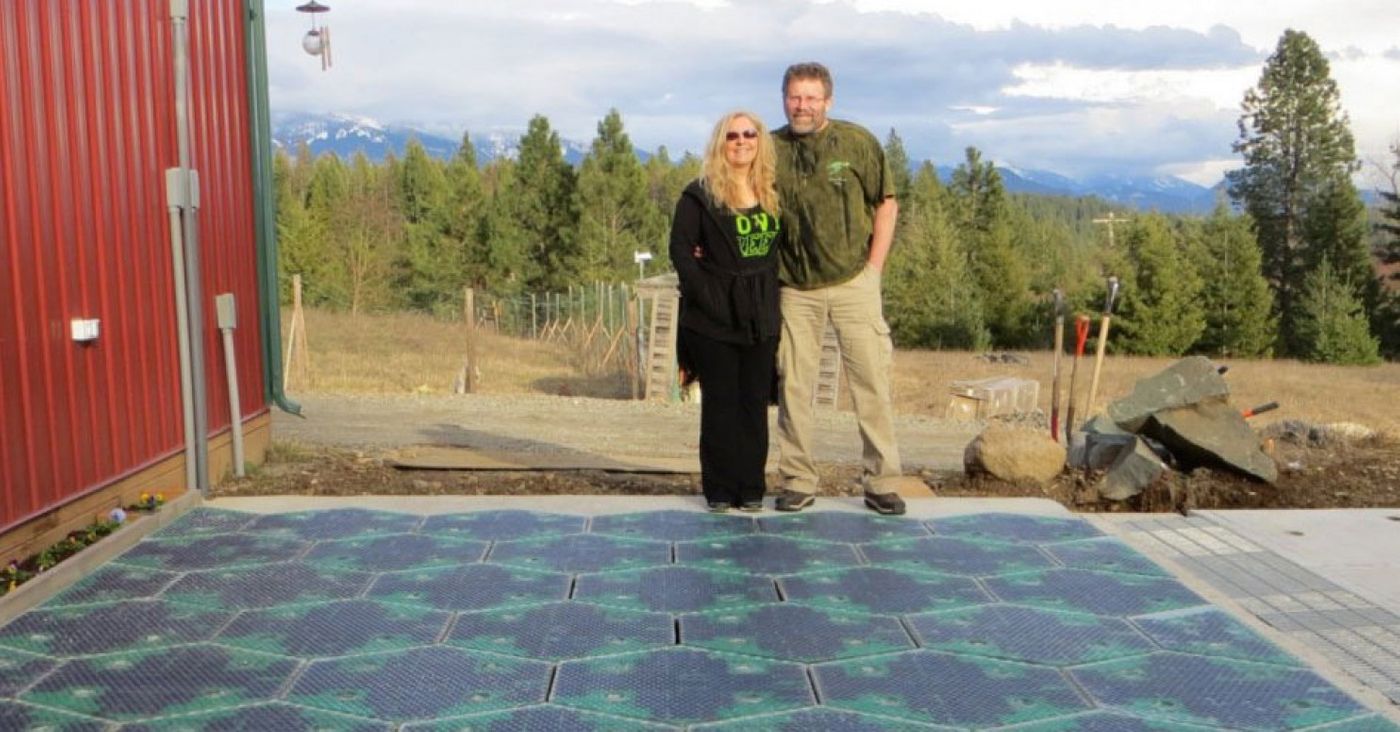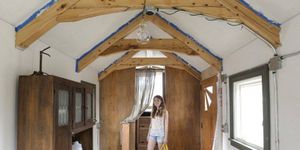Like many of history’s best secrets, Solar Roadways started in a garage. Well, really it started in a preschool, which is where wife and husband team Julie and Scott Brusaw of the Idaho based solar company first met at ages 3 and 4. Inspired by a care for the environment, an engineering background, and a strong desire to protect the future planet for their own granddaughter, the Brusaws first started researching and designing their idea in 2007. They released a 12x12 square foot prototype in 2010 of a glass photovoltaic surface, capable of withstanding 125 tons while converting solar light into electricity.
Scott Brusaw says that the idea surfaced in part because of a realization that the prospect of building asphalt roads in the next fifty years is slim, given that the cost of liquid asphalt has increased from $175 to $1000 per ton in the past past five years due to its petroleum base. Solar Roadways is proposing to exchange potholes for panels. Speaking on a segment of Your Environmental Road Trip, which featured Solar Roadways in 2010, Scott Brusaw commented on the numbers: “There’s 25,000 square miles of road surfaces, parking lots, and driveways in the lower 48 states, as of 2003. If we cover that with solar panels at just a 15% efficiency we produce three times more electricity that this country uses on an annual basis, and that’s almost enough to power the entire world. Roads are collecting heat anyway; this thing just collects the power, and stores it.” With this technology, the roads would act as an electric grid that could power street lights, charge electric cars, and deliver cable, internet, and phone services directly up your solar paneled driveway.

So what does it look like? The simple breakdown of the design is a frame with a fitted glass solar panel that holds a solar collector, LEDs to light up the road lines from beneath the surface, a jumble of electronics, and a storage capacity for power. Most of this technology is already available and on the market - except for the glass. Scott Brusaw says he went to the Materials Research Lab of his alma mater, the University of Dayton, and gave them the requirements for the glass: “It’s gotta have the same traction as asphalt, be strong enough to support a fully loaded semi truck breaking at 80 MPH, be fire proof, shatter proof, and transparent enough to allow the sunlight through but not reflect the glare back into the driver’s eyes.” They said they could do it.
The LED lights are a crucial part of the technology’s Smart capabilities. Because LEDs allow for communication between panels, roads can light up written warnings for drivers on highways to slow down when, say, a pressure system detects a moose in oncoming traffic. The systems also have high potential for parking lots, which would be able to direct a driver to an open spot, or reconfigure the parking lines around an ill-parked car to make space more effective. Even sports courts could benefit from this technology because recreational users could have the option to decide what court lines the LED lights should make, thus making the space more versatile. The possibilities appear to be excitingly bottomless.
Just as exciting is the support that Solar Roadways has received from the public. Gaining over $2.2 million from an
Indiegogo crowd funding site, it is clear that America wants this to succeed. And as we face the prospect of another intense winter, the capacity that solar roads has to melt snow, eliminate salt usage, and radically minimize plowing and shoveling necessity becomes more and more attractive to even climate change deniers.
Sources:
Solar Roadways,
CNN,
Indiegogo,
Ecowatch,
Renewable Energy World,
The Odd is Silent









